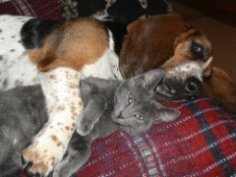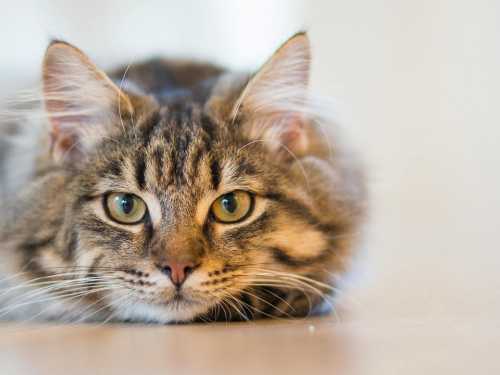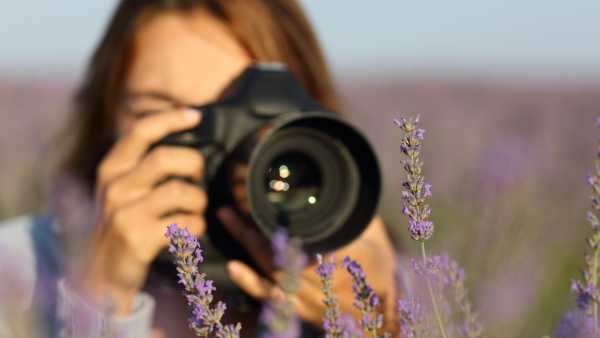
One day, a kitten appeared in our family. Gray and white, fluffy, and very cheerful. We decided to name him “Bunny.” It was certainly an unusual name, but he looked so much like this beautiful creature.
At first, Hare was afraid of everything—doors slamming, knocking… He'd hide under the table and hiss like a snake. He didn't bite or scratch, just hissed. It looked very funny. But after three days, the kitten gradually settled in and began to walk calmly around the apartment; he was no longer afraid of anything and held his tail up like a dignified adult cat.
The kitten turned out to be truly unusual – he immediately started going to the bathroom not in a litter box, even though he was trained to do so, but in the bathtub. It's much easier to clean up, and it doesn't smell at all. As soon as he did his business, meowing could be heard throughout the apartment – the little one was indicating he'd been in the bathroom. In fact, he quickly settled in.
But the following week, his contented and carefree life ended—a dog arrived in the house. Completely spontaneously, without planning, we brought home a mongrel puppy. This sweet creature, reminiscent of a German Shepherd, immediately adapted to apartment life and was unafraid of anything. The kitten, however, had a hard time, even though we were the same age. At first, he was so frightened that he climbed the high refrigerator, right up to the ceiling, to hide—and fell behind it, hissing menacingly. We barely managed to get him out.
The arrival of the dog soured the kitten's mood: its tail drooped, and it no longer meowed. Only hissing and a disgruntled look escaped. The dog, whom we named Juliet, tried everything to establish a relationship with the cat, but Bunny rebuffed all attempts. We were about to give up hope, but then what was supposed to happen happened—they finally got to know each other better.
It all happened like this: the kitten was bored (being constantly depressed can get pretty tiresome), and while the dog was sprawled out on the floor, asleep, Hare approached her. He was intrigued by the dog's tail, which was twitching so attractively in its sleep. Bam! – and the kitten's paw landed on it, trying to catch it. The dog, naturally, immediately woke up and looked at the cat in bewilderment. “What are you doing here?” was clearly written in her gaze. To which the cat “replied” brazenly, “Just wanted to play.” Of course, we couldn't hear their conversation, but their expressions were clear enough. And so their first conversation and acquaintance took place.
Gradually, the animals began to get used to each other: the cat didn't hiss when Julia passed by, and the dog didn't growl if the kitten ran up to her food bowl. Then the first games began. Both animals were in good spirits and playful. The puppy approached the kitten and began sniffing it. The kitten nuzzled the dog's wet nose and, jumping up, hung on the dog's neck, wrapping its front paws around her, claws still clinging. The dog was taken aback, but quickly figured out what was going on and gave the cat a gentle nudge with its nose. The first game had begun.
From then on, our “kids” started to get quite mischievous together. Every morning, around seven o'clock, the “elephant race,” as we called it, would begin around the apartment. Bunny and Juliet would race madly around the apartment, playing tag. And they didn't care at all that it was still early morning, that everyone was asleep, that they were disturbing their hosts and neighbors… They PLAYED. And they were having fun.
That's how the kitten and puppy became inseparable friends. When the dog went for a walk, the cat would sit by the front door and meow piteously, calling for Juliet. And when Zaychik was taken to the dacha, the dog would miss him terribly and constantly stare at his empty sleeping place. And, of course, we didn't want to separate the friends, so we tried to keep them together everywhere. For example, in the car, on the way to the dacha, when the cat was lying in his travel cage and the dog was sitting in the backseat, they would chat. Zaychik would stick his head out of the cage, look at Juliet, and softly meow. The dog would lick him and bark in response. It was simply love.
And from then on, we were convinced of the dog-cat friendship, even though we'd previously wondered how such a thing was possible. True friendship can truly be seen between pets, and we can understand that they miss each other and are miserable without each other…
Many people wonder, “What's the best age to get these four-legged friends?” Of course, babies are the easiest to get used to. But sometimes, a family already has an adult pet, and the owners want to add another friend. It's best if the pet is small (3 to 12 weeks old).
The first meeting of animals should take place under supervision—you never know. After all, one of them is still a baby, and the other is the owner of the house. The “baby” needs to sniff each other, and the “owner” needs to become familiar with its scent. There's no need to force the introduction—the animals will decide for themselves when it will happen. Usually, the first meeting happens at a distance. This is also called “smell familiarization.” The animals sniff each other.
There was never any hostility between these animals—cats and dogs—so peaceful coexistence and even friendship are entirely possible. Take a look at the illustration from the website Petomec.ru—they are true friends!





